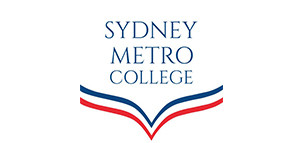Study In Australia

International students aspire to be part of the global educational hub in Australia. Australian universities are internationally reputed for their high-quality education. With a valid subclass 500 student visa, international students can fuel their overseas education dream in Australia with emerging leaders in the world.
Australia is listed among the world’s happiest ranking, 4th on the list. Not limited to that, Australia has five of the best cities in the world from students' point of view. These are Sydney., Melbourne, Canberra, and Brisbane, to name a few.
Why study in Australia?
There are many reasons you can consider when planning your overseas education journey. Australia can be a great choice for education for international students seeking affordable, happy, and highly accredited academic plans in Australia.
1. High-quality education
Australian universities are internationally reputed for delivering professional and high-quality education. What sets the Australian education system apart is its cutting-edge technology and research facilities.
The QS World University Rankings have remarkably appreciated their academic excellence. The University of Melbourne is ranked as the 15th best, Australia National University (ANU) is 25th, and six more are under 100 positions globally. Also, top-tier universities secure designated positions in the Times Higher Education World University Rankings.
2. Wide range of options
If you are looking for undergraduate or postgraduate programs, you can have specializations in engineering, medicine, data science, environmental sustainability, and all. You can collaborate with industry leaders, equip them with enhanced skills and knowledge, and specialize in a diverse range of programs.
3. Multi-cultural learning environment
You get a chance to be part of a multicultural society when studying among the large international student population in Australia. From diverse cuisines to vibrant festivities, multicultural events, and learning about various ethnicities and shared interests, you can network with people from different communities. Be open to new perspectives!
4. Post-study work opportunities
The post-study work opportunities in Australia are catching up for students. Students after graduation in Australia are eligible to obtain a temporary graduate visa (subclass 485) that allows them to work full-time in Australia for up to 4 years (maximum) after graduation. Network with industry professionals to make the most of future opportunities.
5. Happy Index
Talking about Australia, it's one of the happiest countries in the world, ranked 4th as per a recent update. A strong economy, excellent healthcare system, and stable government policy make the country more happening. Cultural richness, a safe learning environment, and top-notch academic plans make it a popular choice for international students.
The education system in Australia
The education system in Australia is highly accredited, with over 20,000 educational programs and over 1000 educational institutions to choose from. Australia has a three-tiered education system with primary, secondary, and tertiary levels of education.
1. Education Structure
International students can participate in higher learning of their choice in Australia by enrolling in one of the 43 universities. Most of them are government-funded public universities(i.e. 40). A few are international universities (2) and one private specialty university.
Catering to various education needs of students, vocational training courses, and an on-campus bachelor's or master's degree are provided. Additionally, postgraduate diplomas, master's, doctoral programs, and practical skills can be learned. TAFE (Technical and Further Education) has been offering skills training too.
2. Qualification frameworks
The Australian education system has been regulated under the Australian Qualifications Framework (AQF) since 1995. Under this national policy, the tertiary education system is located. Students can also transfer credits from previous studies.
3. Fee structure
The average education fee structure in higher education in Australia is between AUD 25,000 and AUD 35,000 a year. Students can gain entrance once they meet the university entry requirements.
Australian universities also run pathway programs for academic entry to desired University programs. Be eligible to study and research in Australia with scholarships.
How Much does it cost to study in Australia?
The popular educational programs in Australia are nursing, architecture, computer science, business administration, and other fields. Without scholarships and financial aid, students are expected to pay between $25,000 and $65,000 for their annual tuition fees, based on the subject they choose.
Let's talk about scholarship and financial aid options available in Australia too. Based on the funding partner, the scholarships in Australia are divided into 3 types,
1. Government Scholarships
In Australia, the government has an annual tradition of funding scholars on a merit-based. The Research Training Program (RTP), the Australia Award Scholarship, and the Endeavor Award Scholarship are some fully and partially funded government scholarships in Australia.
2. Private Scholarships
Private scholarships awarded to top international students are funded by private parties. This includes Australia India Education Council (AIEC) scholarships. Australia ASEAN Awards, and others.
3. University Scholarships
Australian University offers academic excellence, leadership, and financial scholarships to international students every year. Research such accolades, programs, and university scholarships and find the right university scholarships for your educational needs.
Cost of Living in Australia: A Detailed Overview
Let's talk about the living costs in Australia. Break down the general estimated cost of groceries, accommodation, eating out, and utilities like gas, electricity, and additional services you opt for. It takes you around $800 to $1500 in living expenses to study in Australia.
Life in Australia for Nepali students is enduring. With a strong job market, a multicultural environment, and the zeal to make the most of highly accredited courses in Australia, one can thrive for excellence. But let's learn about the living expenses in Australia in the first place.
|
Living expenses in Australia |
Estimated Monthly expenditure |
|---|---|
|
Groceries (self-cooking) |
AUD 140 to 200 |
|
Occasional eating Out |
AUD 15 to 30 per serving |
|
Public transport |
AUD 80 - AUD 150 |
|
Rent (homestay, shared apartment) |
AUD 450 to AUS 1000 |
|
Mobile Phone |
AUD 35 to AUS 100 |
|
Utilities (gas, electricity) |
AUD 85 to AUD 190 |
|
Insurance |
AUD 50 to AUD 150 |
Accommodation options in Australia
As an international student, one can be confused about where to stay throughout the course tenure. Let us guide you through housing options for students in Australia.
1. University Managed stay
International students looking for convenience can stay at the on-campus or nearby housing options provided by the Australian University itself. However, the only concern is that it can get quite expensive for budget-seeking students aspiring for overseas education in Australia.
2. Private rentals
International students can choose to rent houses, apartments, or shared rentals in Australia. It requires more house hunting, but if you refer to real estate agents or their respective platforms, you may find suitable rentals with affordable options too.
3. Homestays
Australian families are willing to take students in the homestays too. It can be a great way to adapt to the Australian lifestyle by living in Australia with support from the family itself. But privacy can be a matter of concern; choose what suits your style.
4. Serviced apartments
One can also choose to stay with service apartments at a premium cost with furnished rooms and amenities like meals and cleaning.
Job Opportunities in Australia (as an International Student)
International students who migrate to Australia for education have a student visa (subclass 500) that allows them to work up to 40 hours per fortnight (two weeks) during your course session. Besides, during term breaks and holidays, one can work up to unlimited hours with a minimum wage rate of A$21.38 per hour.
If you are in Australia and are unsure of how you can get online jobs, Seek, Indeed, and LinkedIn are some online portals to search for jobs. Part-time jobs can help you manage your living expenses and tuition fees in Australia.
Consider an internship that helps you gain invaluable experience post-graduation. The most popular job sectors for international students in the Australian job market with estimated incomes are,
|
Job Sector |
Entry-level (AUD per year) |
Experienced (AUD per year) |
Job specs |
|---|---|---|---|
|
Retail |
$25,000 - $40,000 |
$40,000 - $60,000 |
Sales assistant, Cashier, customer service |
|
Healthcare |
$38,000 - $55,000 |
$55,000 - $80,000+ |
Aged Care worker, nursing assistant, medical receptionist |
|
Hospitality and Tourism |
$30,000 - $45,000 |
$50,000 - $65,000 |
Hotel receptionist, barista, and tour guide |
|
Education and Childcare |
$30,000 - $51,000 |
$50,000 - $70,000+ |
Childcare worker, receptionist, administrative assistant |
|
Information technology |
$45,000 - $60,000 |
$65,000 - $100,000+ |
Software developer, IT support, app developer |
Processing Steps for Studying in Australia
You are willing to know about your overseas education prospects in Australia. So, why late? Let's decode the Australian student visa process from Nepal. Begin by checking the eligibility requirements; here’s what you can do.
1. Research the right educational course
Getting a hint of what you want to pursue at the tertiary level of education in Australia is important. Enroll in a top-recognized course at Australia University and meet entry requirements, along with visa processing for study.
2. Arrange necessary documents
Once you select your desired course, it's now time to arrange the necessary documents and obtain admission. Passport, CoE, language proficiency score, NOC, health insurance cover, and other visa documents.
3. Visa processing
Once you get an offer of enrollment from an accredited educational institution in Australia, it is time to process a student visa. Pay SEVIS fees worth AUD 630, arrange an interview, and keep proof until your visa is accepted. Sincerely complete biometrics, attend the interview and wait for the visa decision.
4. Visa outcome
The Australian Visa Authority is entitled to go through a student visa application. Once all the criteria are met and necessary proof like financial, language proficiency, and required documents are found satisfactory, they give a positive visa decision within 2 weeks to 1 month of application.
The visa duration is equivalent to your course duration, while it can be extended for post-graduation work opportunities in Australia. Kindly go through the Visa Grant letter, which consists of visa terms, conditions, and expiry details.
Every university in Australia has its dedicated accommodation guide for students. One can refer to the housing page and websites like Flatmates.com.au and student forums and contact real estate agents to find the right rental stay in Australia.
One with an Australian Senior Secondary Certificate of Education (Year 12) or the overseas equivalent is eligible to study undergraduate courses in Australia. Get equivalents from respective universities or colleges of yours standing to the prerequisites of enrolling in courses in Australia.
Nepalese students aspiring for international education now enroll in top universities in Australia, even without IELTS. One can apply to meet language prerequisites from the TOEFL and other certificates accepted by the Australian education system.
Australia is a suitable destination for Nepali and other international students to both study and work. The educational system in Australia is highly accredited and has the best cities in the world that are friendly for students, like Sydney, Melbourne, and others.
